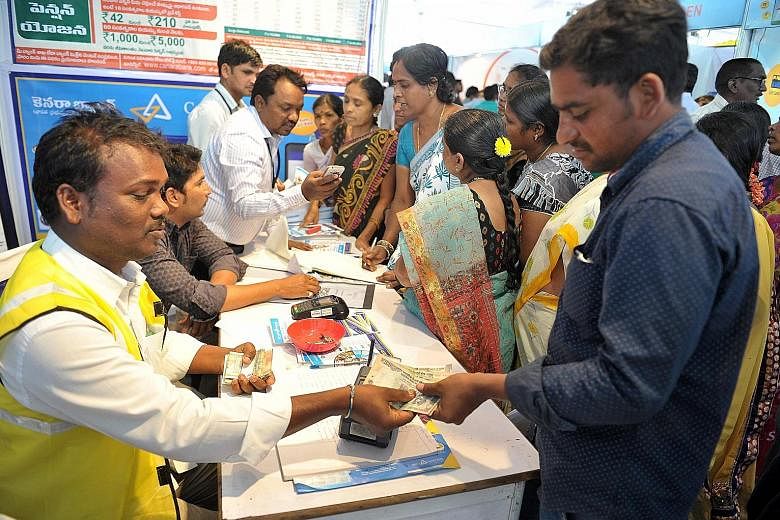Indian Prime Minister Narendra Modi yesterday launched a national payment system that he hopes will entice millions of Indians into switching to digital payments and away from using cash.
Mr Modi has been championing digital payments as a way to modernise the banking system and to bring greater transparency to the economy and curb corruption.
The new system makes use of Aadhaar, the world's largest biometric ID system. Aadhaar, or "support" in Hindi, has over a billion users with a 12-digit, unique-identity number that includes their iris and fingerprint details.
Through yesterday's launch, the government has linked Aadhaar to a payment system called BHIM-Aadhaar Pay, in which customers can make payments from their bank account using their fingerprint rather than a password.
-
HOW AADHAAR PAY WORKS
-
1 Merchants download the app from Google Play Store or iTunes and register using their Aadhaar identification number.
2 The merchant's mobile phone needs to be attached to an Aadhaar biometric reader.
3 To make a payment, the consumer has to enter his Aadhaar number and bank name. Once the customer's Aadhaar number is entered, the app will show the bank accounts linked with the Aadhaar number. The customer then chooses the bank account and enters the amount to be paid. The transaction is completed with a biometric reader - a 2.5cm by 2.5cm device to read fingerprints.
4 There are no transaction fees for the merchant or the customer.
The Aadhaar Pay system is for merchants and uses a downloadable phone app. The government hopes that it will appeal to the millions of rural Indians who use only cash for payments. So far, 27 major banks have tied up with 300,000 merchants that can receive payments from customers using fingerprints matched to their 12-digit number.
"Critics wondered how people who don't have a smartphone would use digital payments. Now, you don't even need a mobile phone. You have a finger, right?" Mr Modi said to an audience in the city of Nagpur in Maharashtra state while launching the app. "If you buy something for 10 rupees 20 Singapore cents), it will be deducted from the bank account. There is no need to take any money."
The Modi government has been trying to push Indians into moving away from cash.
As part of efforts to clean up the country's monetary system, Mr Modi last November demonetised high-value currency notes of 500 rupees and 1,000 rupees to target Indians hoarding undeclared cash.
Since then, both public and private players, ranging from banks to e-wallet and telecom companies, have launched various kinds of digital payment methods.
Still, the launch of Aadhaar Pay does come amid concerns surrounding Aadhaar itself.
Even though Aadhaar started out as a voluntary ID system, it has become almost mandatory because it is needed for everything from opening a bank account to filing income tax returns.
Concerns remain over the safety and security of the biometric data, apart from civil liberty issues. Critics called Aadhaar the biggest government surveillance tool after federal government agencies got parliamentary assent last month to access the biometric database in the interests of national security.
"The concern surrounding Aadhaar is equally applicable in the context of Aadhaar Pay. It was never envisaged that Aadhaar would be used for payment. There is no legal framework for it. The users of Aadhaar Pay must have effective legal remedies if it gets misused," said cyber law expert and lawyer Pavan Duggal.
"It is also the world's largest surveillance system. The government knows everything about a person."
Supporters believe Aadhaar Pay would be positive.
Aadhaar has provided identification to millions of poor Indians who were without any form of identification because they had neither a bank account nor any other documents to verify their address, a prerequisite for all other ID methods.
In addition, Aadhaar has allowed thousands of poor Indians to access social schemes, open bank accounts and directly get funds through their bank accounts, instead of going through middlemen and government employees.
"It's a good thing. This is the only ID that anyone can make. A lot of people in rural India have Aadhaar," said Mr Mohinder Ahuja at YouFirst Money Express.

